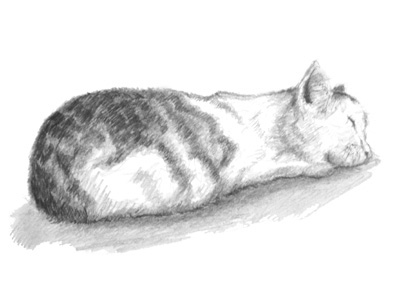Sleeping Cat

One of the greatest artistic controversies beginning with the millennium is whether the great draftsmen of the seventeenth, eighteenth, and nineteenth centuries (like Ingres)"cheated" using optical devices like the camera obscura andcamera lucida. Certainly it is known that artists as long ago as Ancient Egypt used grid methods for preliminary blocking for paintings and transfers. There is also no doubt that at least some early nineteenth century archaeological draftsmen used the fairly compact and portable camera lucida to produce their photographic-like drawings you see in old archaeological reports. Butif the "great artistes" used such "crutches" and how often is hotly debated
Now the camera obscura is a pinhole projector into a dark chamber or room with the paper on the back which is traced by the artist. The Durer grid was a string grid setup in a frame the artist sets up in front of his subject and draws what he sees on a grid drawn on the paper. And the camera lucida uses a prism to make it look like the image had been projected onto a piece of paper on a table top or drawing board
And the artist of CooperToons has taken courses where the use of such devices was taught.
Now the question: Was this drawing made freehand or with a camera obscura, camera lucida, or a Durer grid?
If the answer appears to be "yes", to any of the last three possibilities, then which one? And the reasoning?